Abstract
The rate of net CO2 assimilation (A), the stomatal (gs) and residual (gr) conductances to CO2, the intercellular CO2 concentration, the CO2 compensation points at 21% O2 (Γ21) and at 2% O2 (Γ2), and the amounts of dry matter, nitrogen, and carbohydrates were determined, from anthesis through grain filling, in the flag leaf blade and sheath of spring wheat (Triticum aestivum L. cv Kolibri). The nitrogen content and the rate of net CO2 assimilation declined slowly until the onset of senescence in both organs, about 3 weeks after anthesis. During senescence the reduction of A in both organs was not primarily caused by a decrease in gs; the main factor is the decrease in gr. From values of Γ21 and Γ2 it is suggested that the rate of respiration in the light contributing to the CO2 compensation point is higher in sheaths than in blades irrespective of the O2 level considered. The role of sheaths storing and later transporting assimilates to the developing grains seems to be more important for shoot yield than that of sheaths functioning as photosynthetic organs after the onset of senescence occurs. It is suggested that accumulation of carbohydrates in leaves might somehow trigger senescence in the flag leaf blade and sheath simultaneously.
Full text
PDF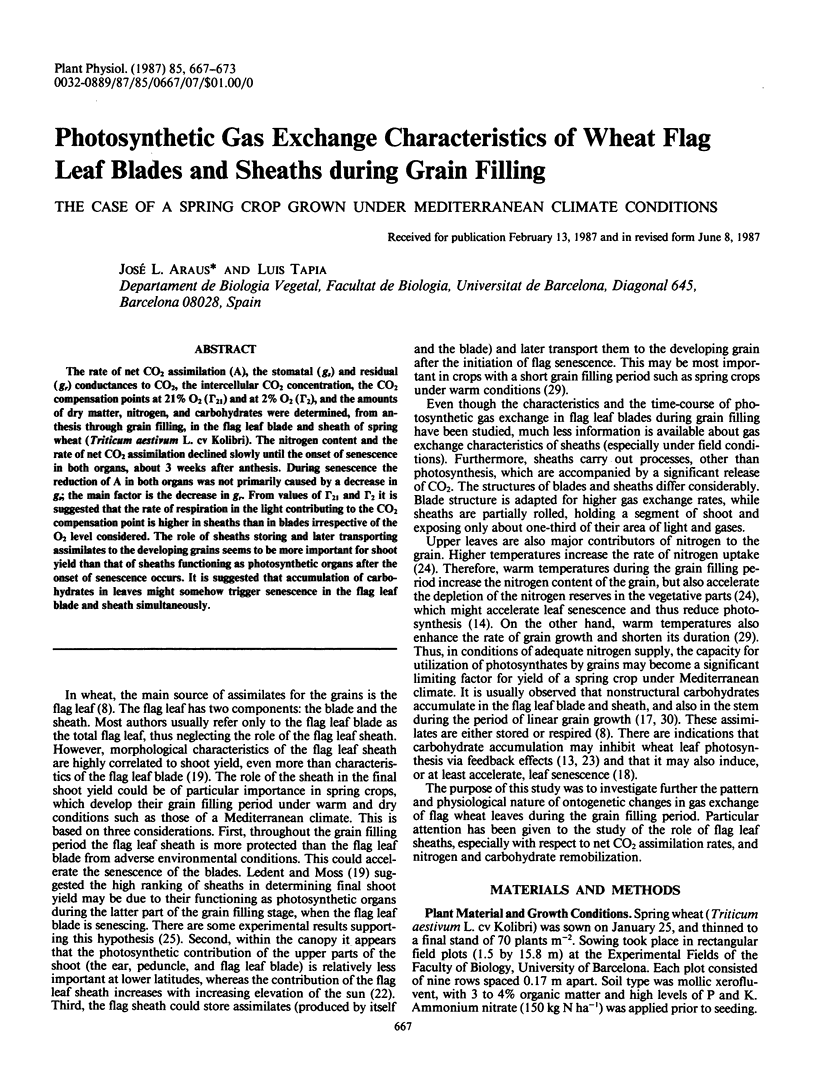
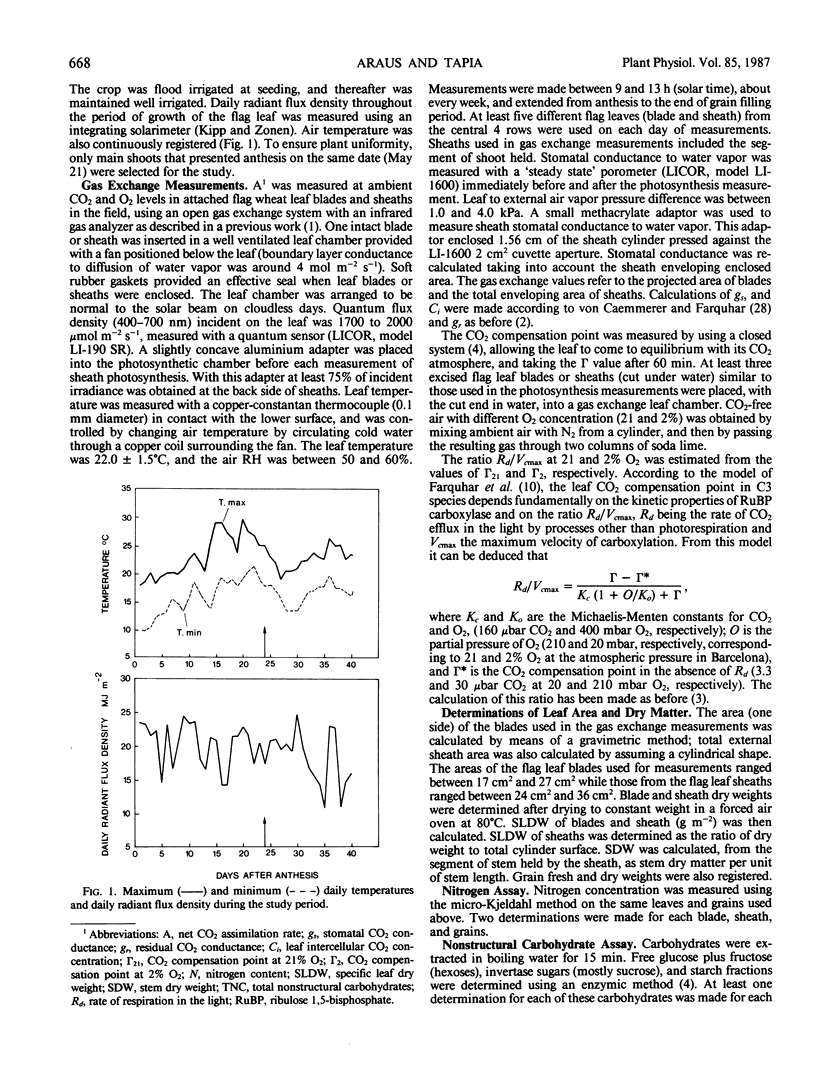
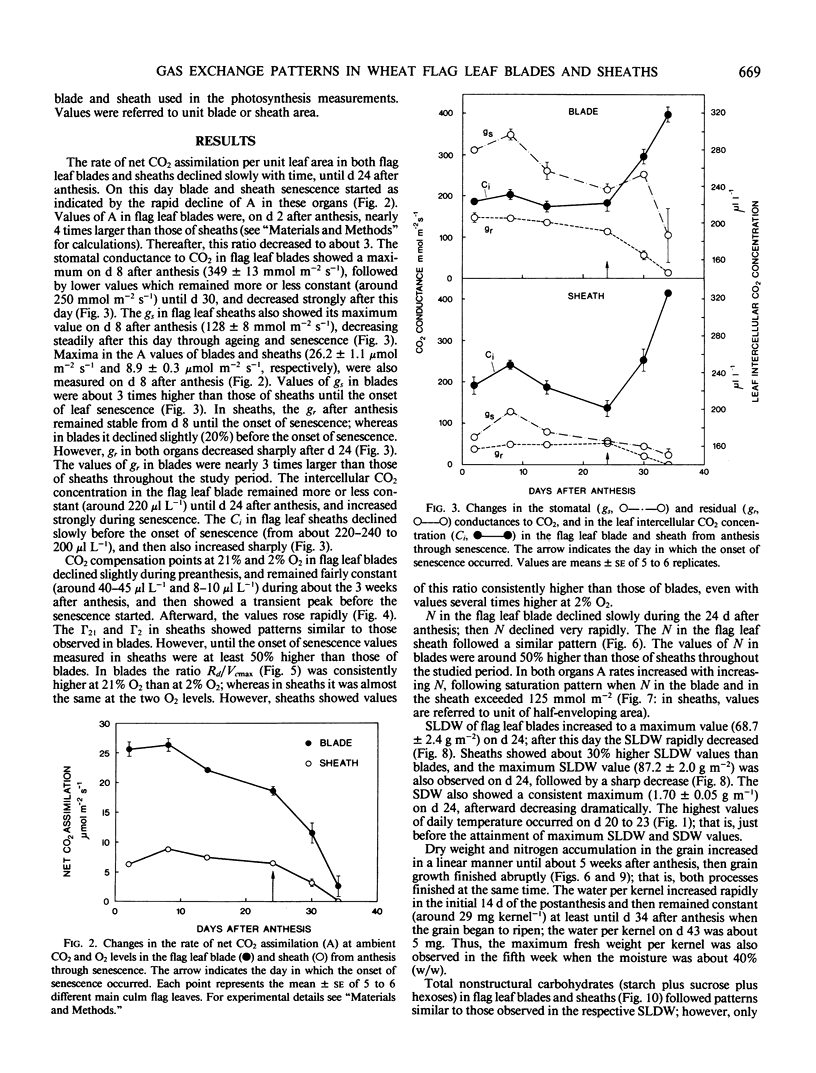
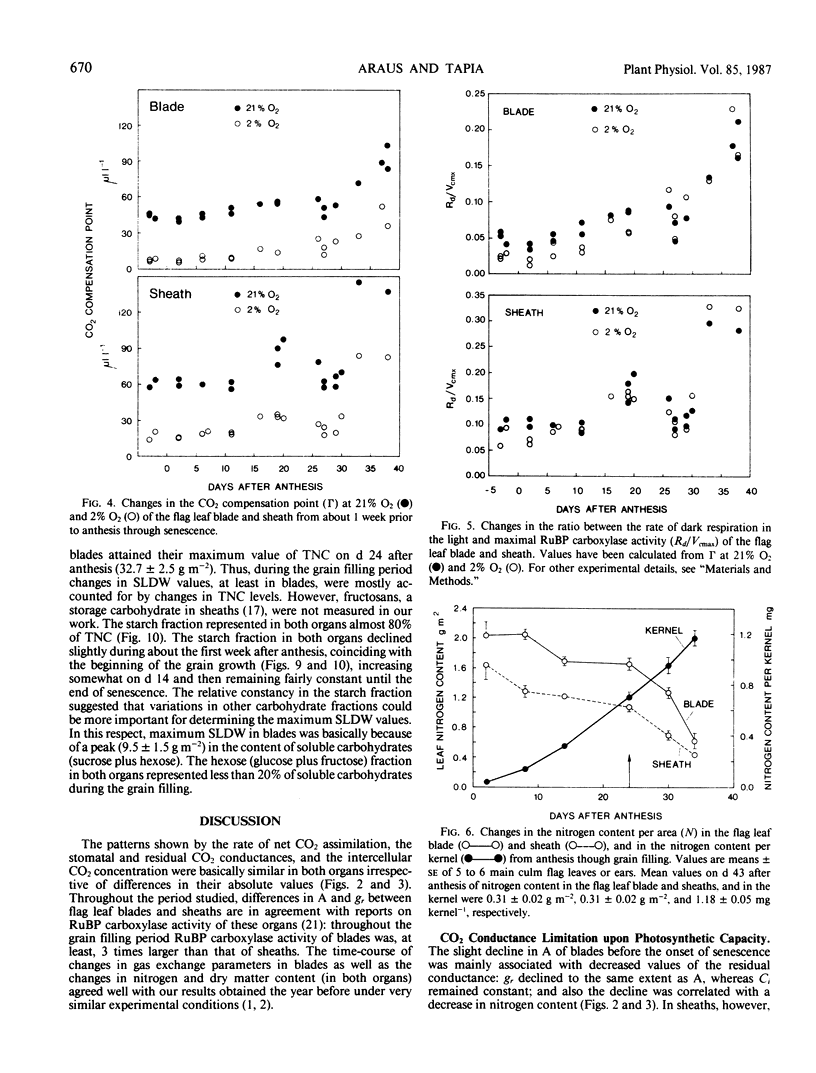
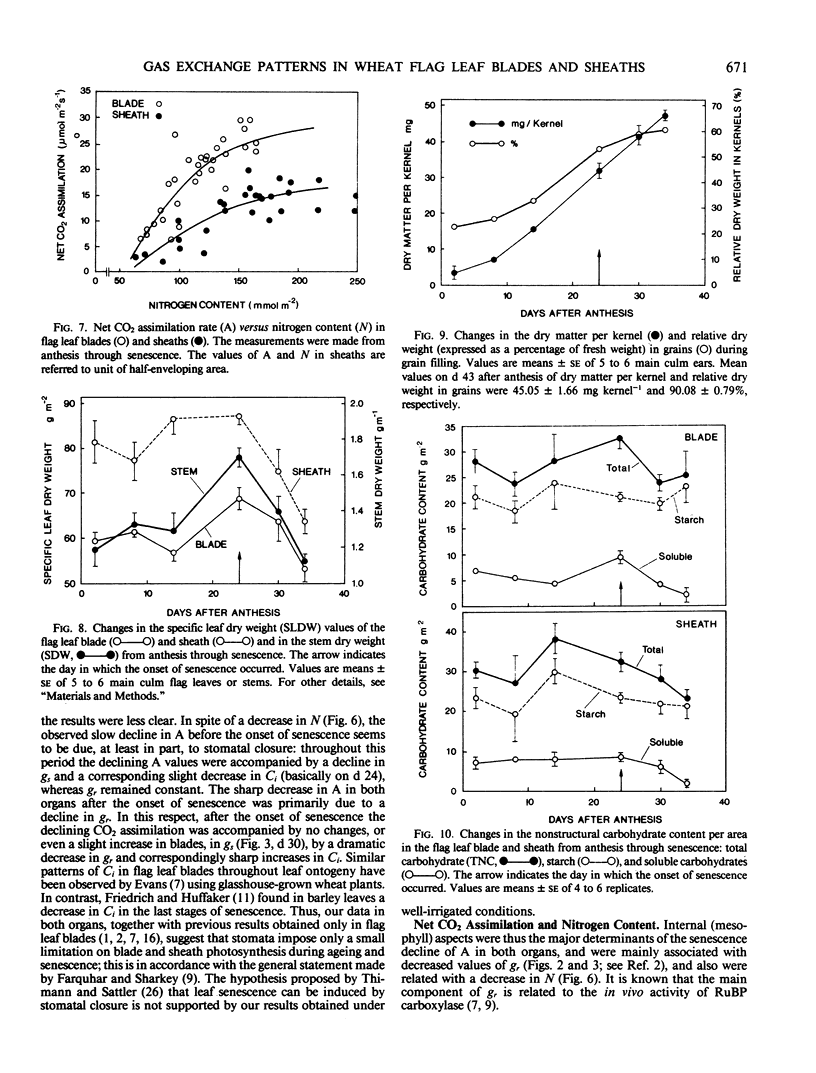
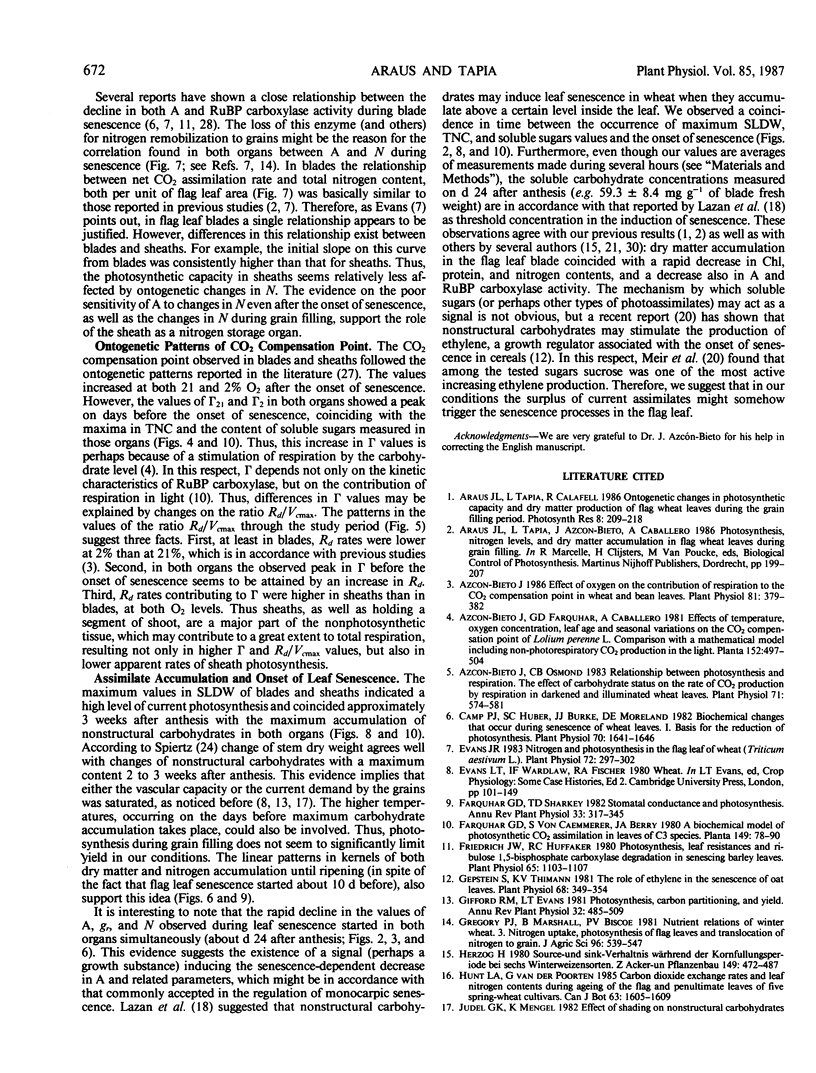
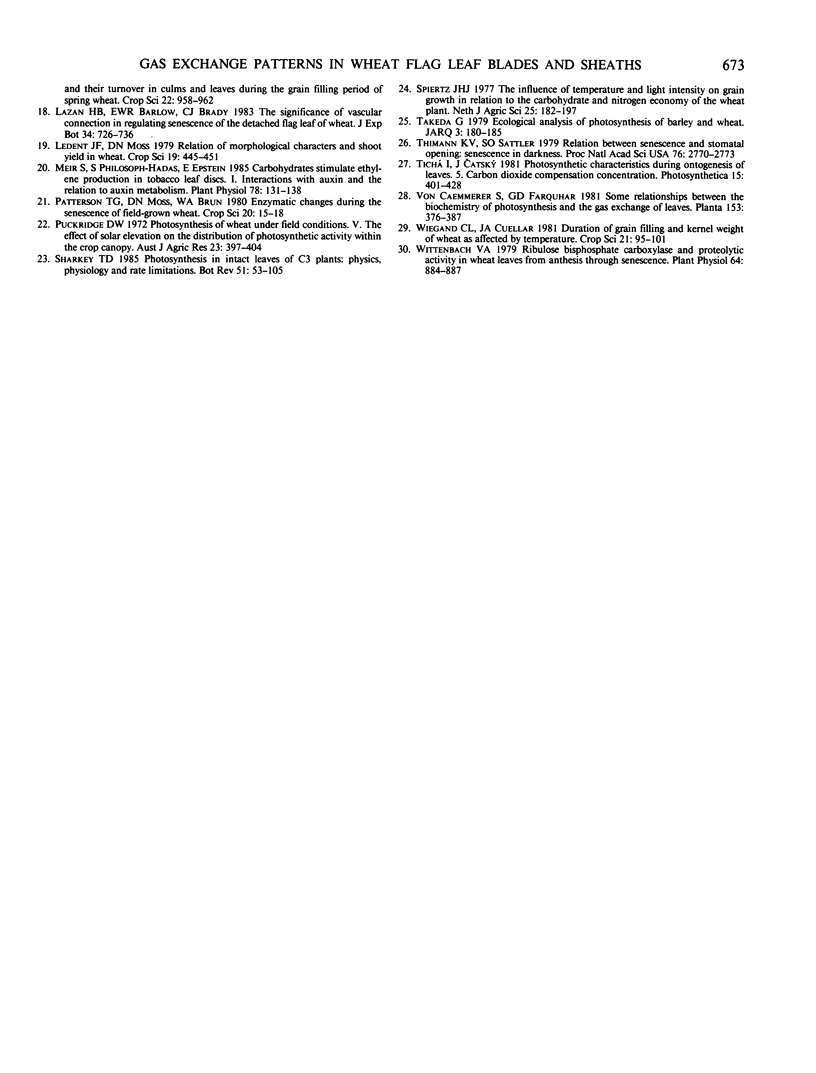
Selected References
These references are in PubMed. This may not be the complete list of references from this article.
- Azcon-Bieto J. Effect of Oxygen on the Contribution of Respiration to the CO(2) Compensation Point in Wheat and Bean Leaves. Plant Physiol. 1986 Jun;81(2):379–382. doi: 10.1104/pp.81.2.379. [DOI] [PMC free article] [PubMed] [Google Scholar]
- Azcón-Bieto J., Osmond C. B. Relationship between Photosynthesis and Respiration: The Effect of Carbohydrate Status on the Rate of CO(2) Production by Respiration in Darkened and Illuminated Wheat Leaves. Plant Physiol. 1983 Mar;71(3):574–581. doi: 10.1104/pp.71.3.574. [DOI] [PMC free article] [PubMed] [Google Scholar]
- Camp P. J., Huber S. C., Burke J. J., Moreland D. E. Biochemical Changes that Occur during Senescence of Wheat Leaves : I. Basis for the Reduction of Photosynthesis. Plant Physiol. 1982 Dec;70(6):1641–1646. doi: 10.1104/pp.70.6.1641. [DOI] [PMC free article] [PubMed] [Google Scholar]
- Evans J. R. Nitrogen and Photosynthesis in the Flag Leaf of Wheat (Triticum aestivum L.). Plant Physiol. 1983 Jun;72(2):297–302. doi: 10.1104/pp.72.2.297. [DOI] [PMC free article] [PubMed] [Google Scholar]
- Friedrich J. W., Huffaker R. C. Photosynthesis, leaf resistances, and ribulose-1,5-bisphosphate carboxylase degradation in senescing barley leaves. Plant Physiol. 1980 Jun;65(6):1103–1107. doi: 10.1104/pp.65.6.1103. [DOI] [PMC free article] [PubMed] [Google Scholar]
- Gepstein S., Thimann K. V. The role of ethylene in the senescence of oat leaves. Plant Physiol. 1981 Aug;68(2):349–354. doi: 10.1104/pp.68.2.349. [DOI] [PMC free article] [PubMed] [Google Scholar]
- Meir S., Philosoph-Hadas S., Epstein E., Aharoni N. Carbohydrates stimulate ethylene production in tobacco leaf discs : I. Interaction with auxin and the relation to auxin metabolism. Plant Physiol. 1985 May;78(1):131–138. doi: 10.1104/pp.78.1.131. [DOI] [PMC free article] [PubMed] [Google Scholar]
- Thimann K. V., Satler S. Relation between senescence and stomatal opening: Senescence in darkness. Proc Natl Acad Sci U S A. 1979 Jun;76(6):2770–2773. doi: 10.1073/pnas.76.6.2770. [DOI] [PMC free article] [PubMed] [Google Scholar]
- Wittenbach V. A. Ribulose Bisphosphate Carboxylase and Proteolytic Activity in Wheat Leaves from Anthesis through Senescence. Plant Physiol. 1979 Nov;64(5):884–887. doi: 10.1104/pp.64.5.884. [DOI] [PMC free article] [PubMed] [Google Scholar]


